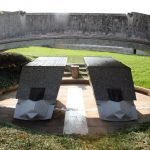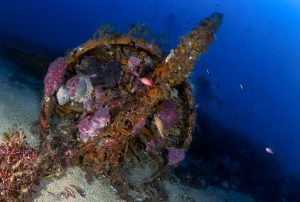
The production sector will still be operational for a century or more and from 1860 to 1870 its business will grow considerably. In 1900 the paper mill was purchased by Don Nicola Scotto from Naples with the intention of making it still competitive. Scotto built a penstock that was able to operate the turbines of the paper mill with greater power and which, subsequently, was used by himself for a hydroelectric plant of 1,000 kW. In the history of the paper industry, great importance was given to the creation, in 1798, of the “continuous machine”, designed by Louis-Nicolas Robert, employee of the paper mill owned by the Parisian printers Didot-Sant-Léger of which Carlo Lefebvre, business partner financed the design. Thanks to it, it was possible to manufacture a continuous sheet of paper 68 cm wide and 60 cm long, and thus increase production and halve the time and labor employed. The “continuous machine” or “sans-fin” revolutionized the entire production cycle. With this invention the passage from the artisanal production of paper (sheet by sheet) to the industrial one was realized, a fact that paved the way for the great diffusion of books, periodicals and newspapers. The installation of this machine required strong economic investments to the point that in 1826, the industrialist had asked the Bourbon government for the exclusive import of the machine and the exemption from payment of customs duties also for the cylinders and accessories needed and made in iron, copper, lead and wood. The portion of the territory of the town of Isola del Liri where these new factories arose and where the owners built their luxurious residences, surrounded by fountains and lush tall trees, as well as by the natural beauty of the places, was called the Little Paris, for the he enormous fascination and amazement aroused in the visitors of the time: royalty, nobles, writers, artists and poets from all over the world for the atmosphere that was lived in those places. This examination of the Valle del Liri is actually only a preamble justified by a historical note to make the reader understand how the paper sector was very much alive. The Amalfi coast was actually the cradle of paper production, authoritative historical studies comment that: “In the 11 municipalities of the coast, of the 200 paper mills of the Kingdom 60 were located in these lands”. The purity of the water actually managed to give a paper of fine workmanship, which is why the Amalfi paper masters preferred to build the fulling mills or paper mills; together with paper, leathers, silks, metals were placed side by side, thus creating a renowned basin. The Amalfi coast became a leader in the paper production sector having at its disposal not only the landscape but also the experience of a millenary activity. In this regard, in 1815 on the occasion of the Manufacturing Industry Exhibition, the best paper was: “by Amatruda from Amalfi and Forte from Vietri” quotes De ‘Crescenzo. Characterized by a soft watermark, this type of paper was used for public acts not causing the ink to discolour. From the Liri valley to the whole valley of the Mills it was possible to have every type of paper from the precious one called “bambace” to the scrap used by fishmongers. The activity of the paper mills in the rest of the Two Sicilies also counted positive numbers in Atina, Liri Sora, L’Aquila, Sarno, Scafati, Nusco, Atripalda and in Calabria. Paper mills for the production of cartons are typical in Calabria. The case of the Sulmona paper mills deserves a separate discussion; many situations here change with respect to the Campania area, here the factories are owned by pious entities or even in the hands of aristocrats, the only subjects who could have economic means to cover the costs of production. It is absolutely impossible to deal with a discussion of this type on paper mills if it is not dealt with the discourse on the book industry. 2500 were the employees in the printing works, 133 were only in Naples, good quality and excellent layout. The Royal Military Typography produced excellent topographic maps, the drawings of the Pictorial Journey of the Two Sicilies were at the forefront.













